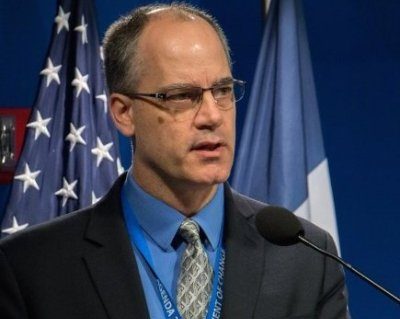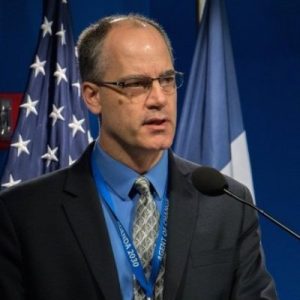Tony Pipa: Lifetime Public Servant
This is part of a series of Q&A posts with the leading experts who make up our Advisory Council, a group of hardworking ambassadors passionate about changing the face of disaster giving for the good of affected communities worldwide. How did you come to be on the advisory council? I have been with CDP from […]

This is part of a series of Q&A posts with the leading experts who make up our Advisory Council, a group of hardworking ambassadors passionate about changing the face of disaster giving for the good of affected communities worldwide.

How did you come to be on the advisory council?
I have been with CDP from the very beginning through my involvement with philanthropic relief efforts after Hurricane Katrina. I worked closely there with Lori Bertman, and years later participated in the initial brainstorming when she and Eric Kessler, CDP co-founders, were just beginning to formulate plans for the organization.
Immediately after Katrina, as a former founding CEO of a private foundation, I was brought in with other experts to plan and launch the Louisiana Disaster Recovery Foundation. Governor Kathleen Blanco created the Foundation to manage the private donations that started flowing in after the hurricane. That experienced informed the paper I wrote, “Weathering the Storm: The Role of Local Nonprofits in the Hurricane Katrina Relief Effort” for The Aspen Institute. The report examined how vital the small and medium-sized local nonprofits and faith-based groups were to disaster response and recovery efforts. It also looked at ways to better leverage coordination between community organizations, funders, and government agencies.
At the U.S. Agency for International Development (USAID) I continued to facilitate partnerships with other donors, both private and public, exploring how the Agency could be more nimble and effective as emergencies grow in complexity and scope and how we could help communities be more resilient. [Editor’s note: As the former Chief Strategy Officer at USAID, Tony wrote, “A Salute to Public Service.”]
What do you gain from your experience with CDP?
Through the CDP advisory council, I am exposed to cutting edge expertise in disasters, philanthropy, and humanitarian work. It is a diverse group of thought leaders working in varied aspects of relief and recovery, and everyone brings a different perspective to our discussions. I also love the fact that CDP is grounded in using data and evidence to learn and improve our approach to disaster philanthropy.
From a development perspective, I appreciate that the advisory council works on both natural disasters as well as complex humanitarian emergencies. Global crises are becoming more dominant, increasing in scale and scope, and this requires strategic shifts by philanthropy. The scale of resources, both public and private, that are necessary to respond is increasing significantly. We must determine how we come together across sectors to develop expertise in these areas and address global crises in different ways.
Is there a specific disaster event that shaped how you approach your work and/or life?
Certainly Hurricane Katrina was life altering for me. Not only was it a new professional experience – I had never participated in disaster relief before – but it was there that I met my wife! Being on the ground within a week of the hurricane, I got a sense for how chaotic things were, how difficult it was to meet people’s needs when government and other institutions had limited capacity.
With a background in community and private philanthropy in North Carolina, I knew the value local leadership brought to the situation. I was able to provide a bridge between that local expertise and national organizations that were interested in helping in the midst of all that was going on. It was a privileged position to help connect so many community groups and foundations in a time of real crisis.
Looking to the future, what trends or predictions do you have for disaster philanthropy?
The increasing scale and scope of global crises is having a huge impact on those at bottom end of income scale. The average length of a displacement for a refugee is now 17 years. In our mobile, connected world, complex political emergencies result in greater mass movements.
All this challenges aid and nongovernmental organizations to think differently to maximize their impact. Additionally, there is increasing recognition that these crises are not the responsibility of a single sector. We realize that we have to have greater private involvement—corporations and foundations—and be willing to work across and involve different sectors to be most effective.
However, at the end of the day, it is shortsighted to expect to raise sufficient private donations after the fact to address disaster after disaster. Nor is this a recipe for success given the increasing scope and speed of disasters. There needs to be a lot more creativity and long-term thinking around financing disasters.
There’s potential for disaster bonds, impact investing, or disaster insurance as a way to shift the conversation. There’s promise in the emerging attention being given to building the resilience of families and communities using approaches that integrate the best of humanitarian and long-term development strategies. There’s a package of tools that we need to be building that better leverages private funding, by developing effective mechanisms in advance of disasters.
More like this
